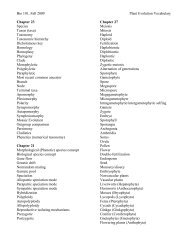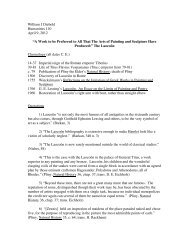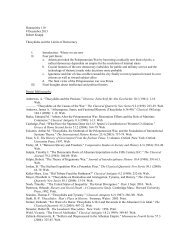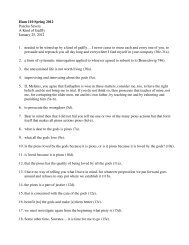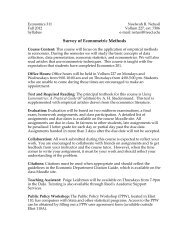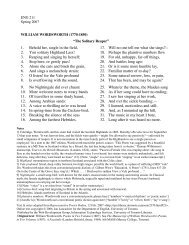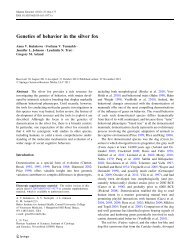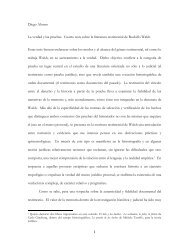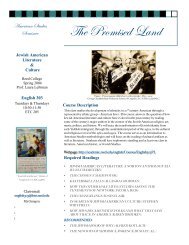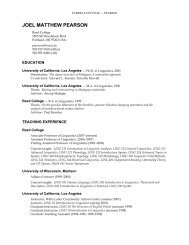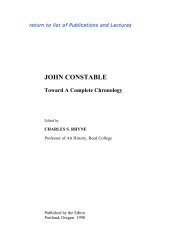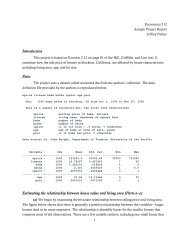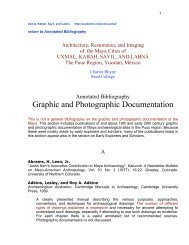REED COLLEGE SCIENCE OUTREACH PROPERTIES OF MATTER
REED COLLEGE SCIENCE OUTREACH PROPERTIES OF MATTER
REED COLLEGE SCIENCE OUTREACH PROPERTIES OF MATTER
You also want an ePaper? Increase the reach of your titles
YUMPU automatically turns print PDFs into web optimized ePapers that Google loves.
30<br />
• New solid: Students may or may not see the limestone in this reaction.<br />
Limestone may appear on the sides and bottom of the bag as a white powder. If<br />
the students allowed the water in the bag to evaporate over time, they might<br />
also eventually notice salt crystals forming.<br />
• Color change: Students will put in turmeric as a chemical indicator (similar to<br />
the cabbage juice experiment from last week). It will turn red in response to the<br />
baking soda (a base). As the reaction progresses it will turn yellow, indicating<br />
that an acid is being formed. (The acid is actually the result of a second reaction.<br />
The products of the reaction, water and the carbon dioxide, will undergo a<br />
second reaction to form a weak carbonic acid.)<br />
• Temperature change: As the reaction progresses, energy will be released,<br />
resulting in heat. The students should be able to notice that the bag warms up.<br />
Materials<br />
o Goggles and gloves<br />
o Cafeteria trays<br />
o Plastic bags, spoons, & paper<br />
towels<br />
o Containers of pre-measured<br />
turmeric, baking soda, & calcium<br />
chloride<br />
Lesson Plan<br />
Review & Introduction (5-10 Minutes):<br />
1. Remind students one more time of the properties that we have learned about so far<br />
(magnetism, physical states, pH…). Also remind them about how they learned that<br />
atoms like to interact with each other. Tell students that today we are going to learn a<br />
little bit more about chemicals/molecules interact. Explain that sometimes when two<br />
types of matter react together, they make changes to each other. When they do this<br />
there can be some pretty dramatic results (explosions, color changes, etc.).<br />
2. Can the students think about any chemical reactions that they have seen? (Last<br />
week’s experiment, fires, baking soda + vinegar, cooking food, rusting, bleaching hair,<br />
etc.). Ask the students how they know that these are chemical reactions. What signs are<br />
there that they are chemical reactions?<br />
3. Explain that they should be able to recognize a chemical reaction by the following<br />
signs: appearance of a new gas, liquid or solid, color change, temperature change,<br />
appearance of light, or a change in pH. Basically any properties that seem to change<br />
could be signs of a chemical reaction.<br />
4. Tell students that these reactions are not too different from when atoms make bonds<br />
with other atoms (think about the modeling activity). But sometimes, when you mix two<br />
types of molecules (atoms that aready have formed bonds), the atoms “decide” that they<br />
would rather form bonds with a different atom, and so they switch partners.



